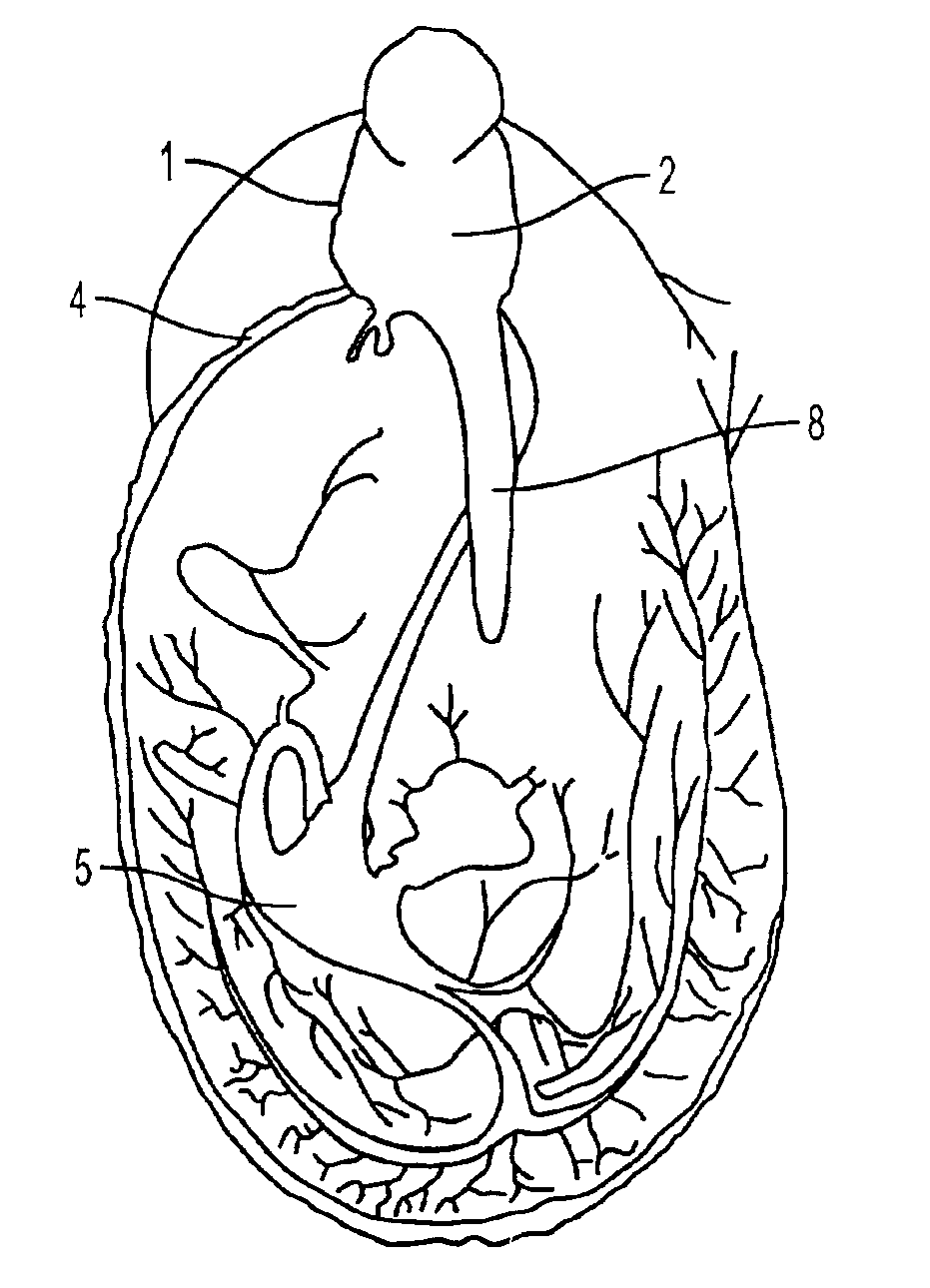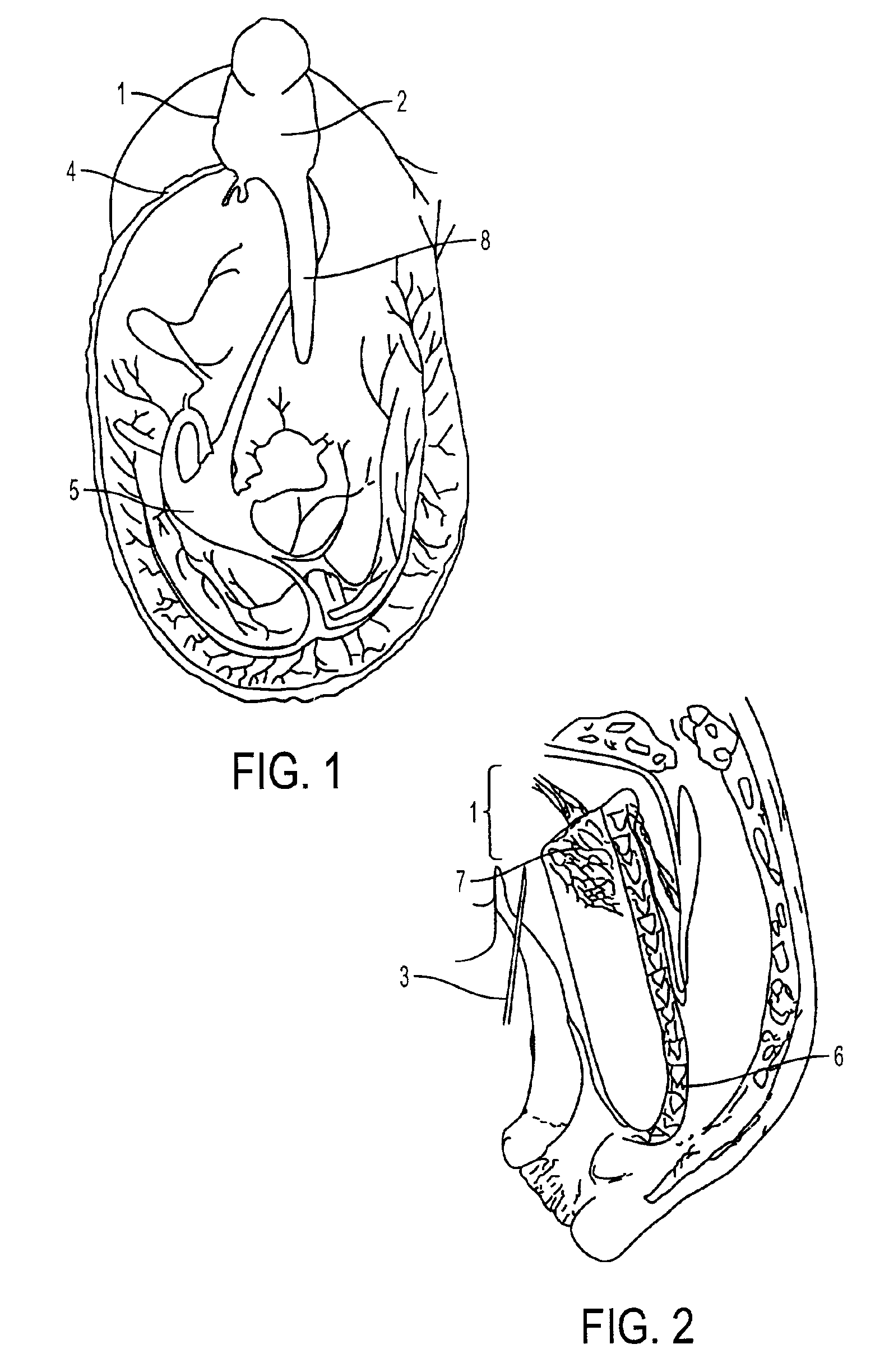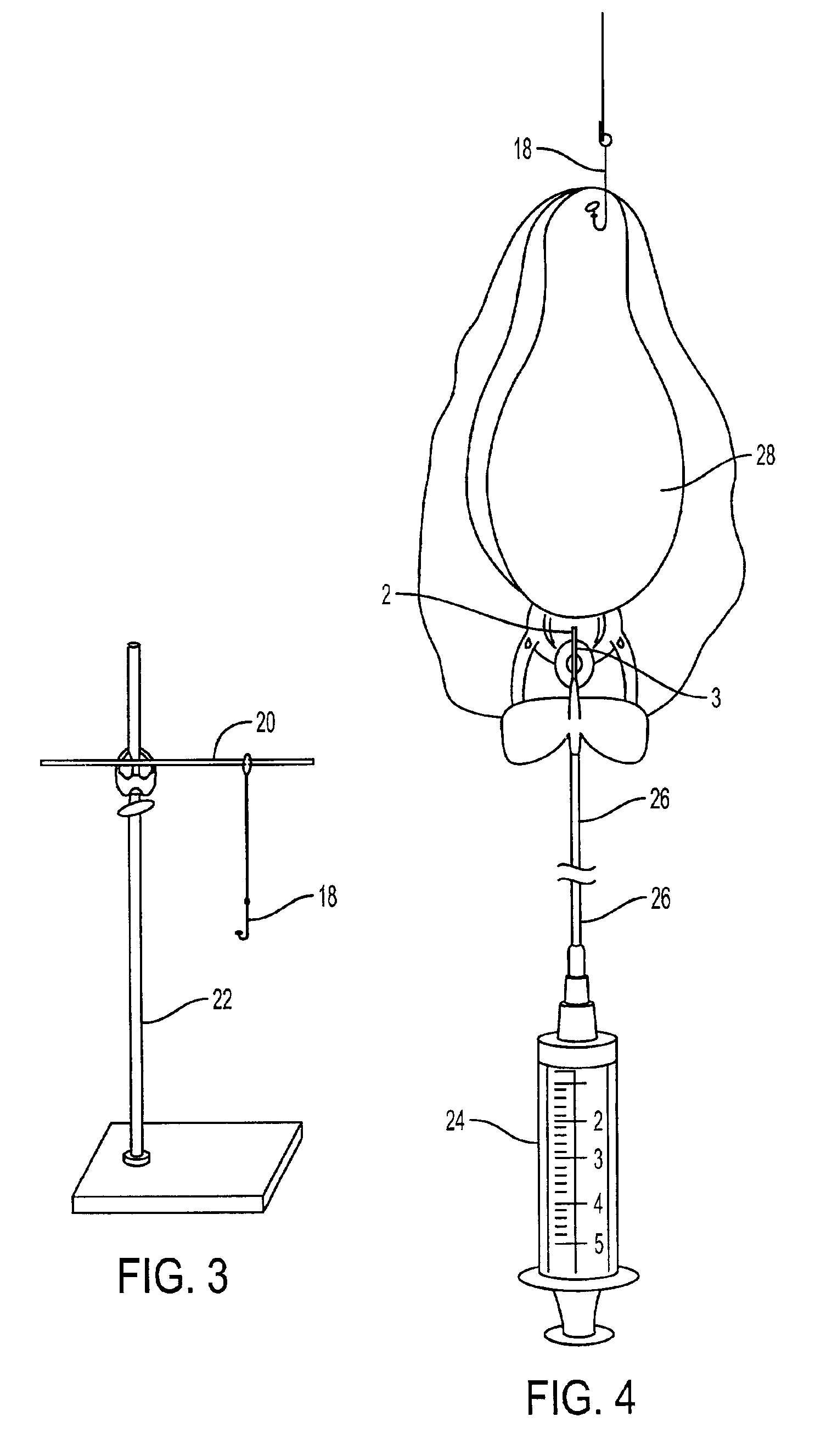Non-lethal method for extracting crude hemocyanin from gastropod molluscs
a gastropod mollusc and crude technology, applied in the direction of peptide/protein ingredients, application, peptide sources, etc., can solve the problems of recombinant production, death of the source animal, and inability to readily re-supply hemolymph,
- Summary
- Abstract
- Description
- Claims
- Application Information
AI Technical Summary
Benefits of technology
Problems solved by technology
Method used
Image
Examples
example 1
The purpose of this example was to demonstrate that commercially significant volumes of hemolymph could be repeatedly extracted from the same gastropod mollusc without adversely impacting the health of the animal.
A five month study was conducted in which twenty healthy specimens of the genus Megathura (Giant Keyhole Limpet) were divided into four groups of five animals and placed in a controlled-environment aquaculture system. Three of the groups were subjected to hemolymph extraction at periodic intervals (Group 1: 9 week intervals; Group 2: 6 week intervals; and Group 3: 4 week intervals). The fourth group was used as a control.
For extraction, the mollusc was immobilized in a head down position using an apparatus (see e.g. FIG. 4). A hollow needle was inserted into the buccal sinus and the volume of hemolymph that could be extracted in one hour was collected.
The volume of hemolymph, animal weight, hemolymph protein isoform profile, and animal survival data were recorded for each e...
PUM
| Property | Measurement | Unit |
|---|---|---|
| diameter | aaaaa | aaaaa |
| temperature | aaaaa | aaaaa |
| gravity | aaaaa | aaaaa |
Abstract
Description
Claims
Application Information
 Login to View More
Login to View More - R&D
- Intellectual Property
- Life Sciences
- Materials
- Tech Scout
- Unparalleled Data Quality
- Higher Quality Content
- 60% Fewer Hallucinations
Browse by: Latest US Patents, China's latest patents, Technical Efficacy Thesaurus, Application Domain, Technology Topic, Popular Technical Reports.
© 2025 PatSnap. All rights reserved.Legal|Privacy policy|Modern Slavery Act Transparency Statement|Sitemap|About US| Contact US: help@patsnap.com



